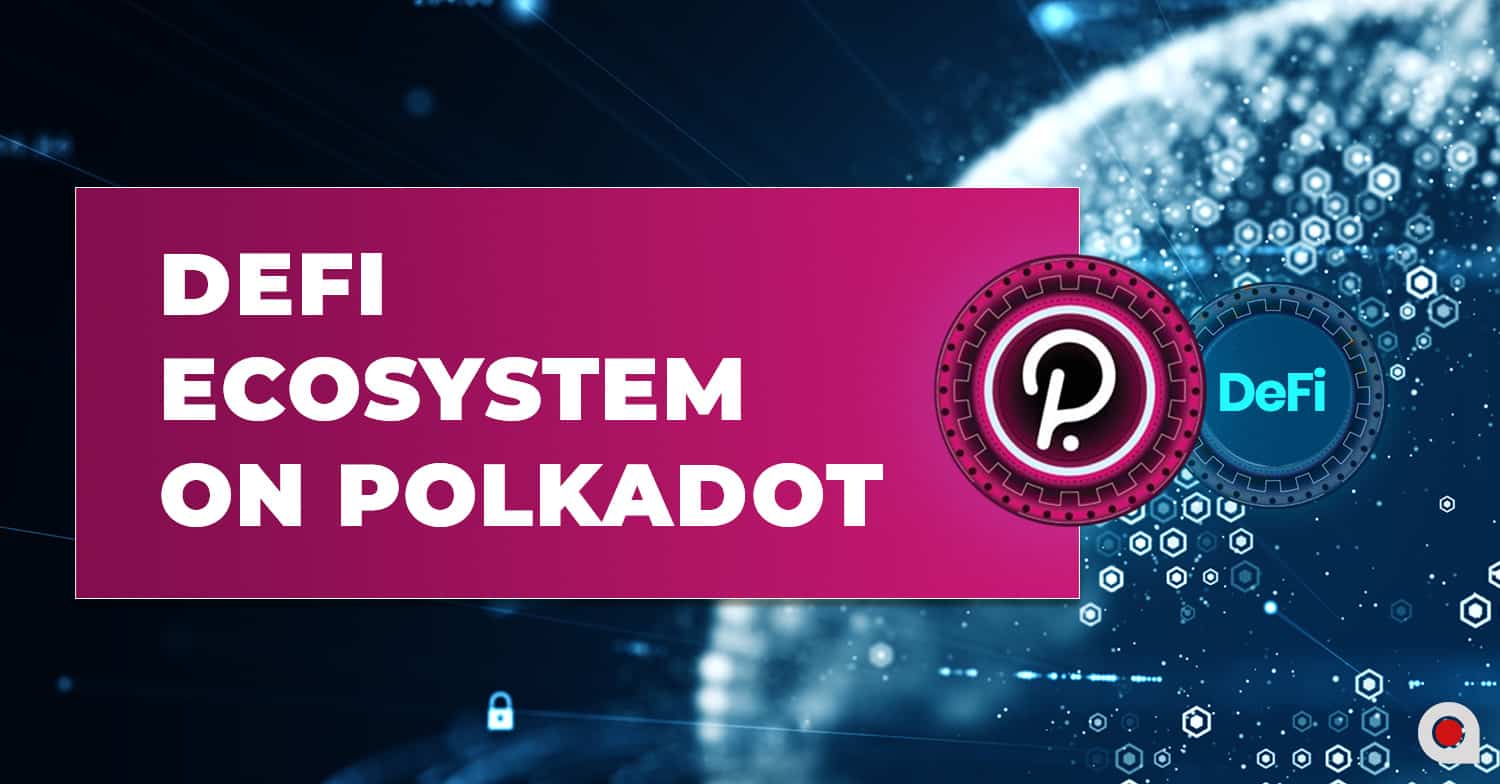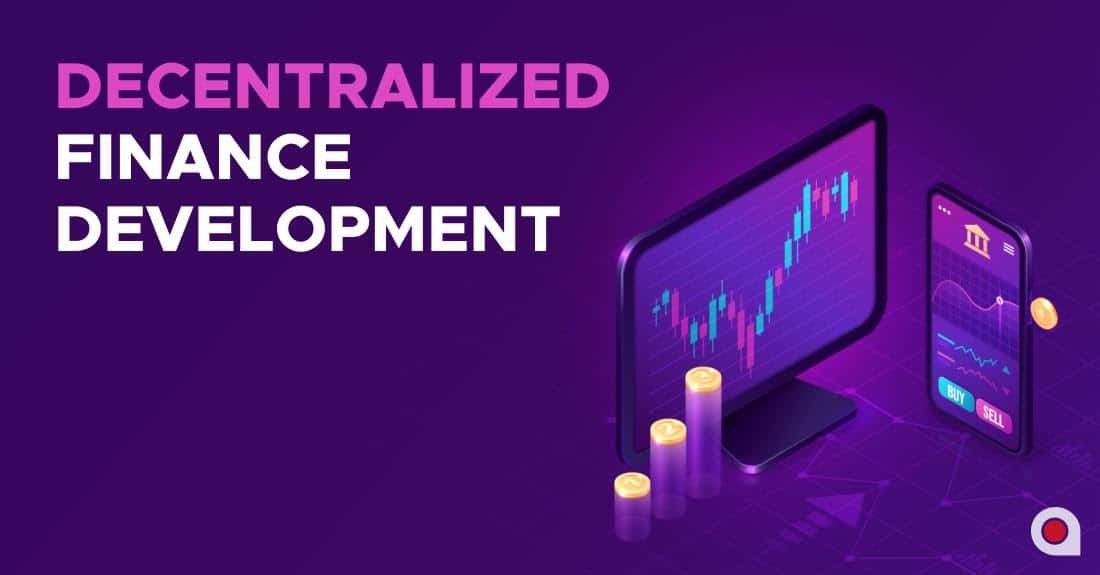
In our post exploring the fundamentals of DeFi, we looked at how the legacy of closed financial systems is shifting towards an open economy by leveraging blockchain technology and open protocols that interact with smart contracts, utility tokens and cryptocurrencies. We would say that DeFi is the future of money, except it’s already here, and it’s not going anywhere.
OK – but what about in practice? In this series of blog posts, we’ll uncover the many real-life applications of DeFi technologies so you can understand how to get started interacting with them – and even launching your own DeFi project!

DeFi Peer to Peer Loans Explained
One of the biggest revolutions that DeFi has introduced is the idea of peer to peer lending and borrowing. Indeed, there are hundreds of DeFi projects out there right now that are allowing individuals to borrow and lend crypto assets directly to each other without relying on an intermediary such as a traditional fiat bank.
For hundreds of years, whenever someone wanted to take out a loan, they had to curry the favour of a credit institution by submitting a loan request and being at the mercy of the institution’s opaque decision-making process as to whether or not that loan will be granted. Finally, after days or weeks of waiting, you might get a loan approval subject to certain stringent requirements.
From the lender’s perspective, this is necessary to ensure that the individual being granted the credit is trustworthy and capable of paying it back with interest. However, this system is ultimately dependant on a rock-solid understanding of an individual’s or organisation’s credit history.
By contrast, through peer-to-peer lending, DeFi loan applications remove the bureaucracy in lending and borrowing transactions. The trading app can gather the crypto assets from those who decide to put them up for borrowing to those who need funds. It would all happen through a smart contract and would not be regulated in the same ways as a traditional loan. The risk is mitigated by using crypto assets as collateral.
Borrowers receive financing from individual investors who are willing to lend their own money for a fixed or variable interest rate that is governed by a smart contract. Both parties can connect through a decentralized peer-to-peer loaning platform such Oasis for DAI or Aave where investors can assess potential creditors to decide if the risk extending a loan to that person is justified.
Now, it’s even possible to mortgage your house on DeFi: RealT Market, that specialised in the tokenization of real estate, is joining forces with Aave to let people stake their tokenized real estate as collateral to take out decentralized loans.

An interesting innovation that has emerged on certain platforms are Flash Loans. As the name implies, these can be acquired quickly without the need of any collateral and at a low cost of interest. The tradeoff is that they rely on the quick timing of the repayment within the same transaction. A flash loan request is automatically approved by the smart contract as long as it is paid back within the same transaction period. If this doesn’t happen, the loan falls through and the assets are reverted back to the original holder. Flash loans are typically leveraged by users who want to utilize the liquidity to perform a profitable arbitrage trade (such as taking advantage of the differences in prices between energy and commodities markets) between different decentralized exchanges.
Advantages of DeFI loans over traditional loans
A high level of control, security, privacy, and accessibility make giving and receiving DeFi loans a complete game-changer that nobody interested in finance can ignore. Here is a breakdown of all the advantages users of such applications can benefit from:
- Privacy – a loan can be taken or given without requiring any information about who is on either end of the loan.
- Speed – Getting the loan or payout is also faster due to the permissionless nature of DeFi applications.
- Control – No single individual or entity has complete control of the money being exchanged, so the risk of fraud is mitigated significantly.
- Accessibility – Blockchain-based credit platforms such as Nexo don’t ask for a credit score or history but are still able to offer instant loans in over both crypto and fiat currencies.
- Transparency – Anyone can log into their crypto wallet like MetaMask to monitor the blockchain and track their transactions.
- Collateral – Crypto assets are actually the perfect collateral and can be instantly liquidated as needed to repay a loan so there’s almost no risk to the lender.
- Options: There are so many types of assets to choose from, and it’s always growing, Indeed, DeFi lending platforms let users borrow or lend a range of crypto assets.
- Easy to use – The majority have a relatively simple dashboard from which to browse the variable interest rate of any listed crypto asset, lend, borrow and make payments.
Disadvantages of DeFI loans over traditional loans
The biggest drawback involved in DeFi lending and borrowing for the is an unstated risk, as noted on June 20, 2020 by Vitalik Buterin, the founder of Ethereum.
This is because it operates differently from a fixed-term loan. Instead, technology like Compound is always varying the rate of interest. Even with the understood promise of implied continuity, there is enough variance to point out when comparing DeFi loans to traditional fixed-income investing.
According to David Siemer, CEO of Wave Financial Group “the risks of DeFi lending at any level are rather high, and the returns uncertain…[risks are] increased by the leverage permitted by smart contract implementations, and the returns are made even more uncertain by their dependence on the volatile price of token rewards.”
Keeping all that in mind it’s important to not be blinded by the hype and do your own research if you plan to either lend or borrow on the blockchain system. With the example of Aave and RealT as mentioned above, for instance, the risk is high as a bug in the smart contract or a hack could result as someone losing their home.
Launching your own DeFi lending and borrow platform in 2021
If you’re willing to stand out in the lending and borrowing space and innovate, the money legos world of Ethereum could be the key. If you don’t have the full team in-house to build and launch your own DeFi project yet, you can bring in a DeFi blockchain development agency to help you figure out how to tokenise your services or chosen industry.
What’s next for DeFi credit trading?
Regardless of the risks, It’s almost inevitable that in the next few years, the old school trading world will be sucked into DeFi more and more, and banks may borrow some mechanisms that the DeFi space has to offer in terms of more transparent lending, borrowing and especially collateralized loans. As the ecosystem of “money legos” continues to stack on top of the Ethereum blockchain, compounding the value of the individual technologies, we predict that traditional “brick and mortar” banks will start to wake up and attempt to grapple with this amazing shift in the dynamics involved in lending and borrowing. In the meantime, our team will be involved in building the future of DeFi trading apps.

 DeFi ecosystem on Polkadot
DeFi ecosystem on Polkadot
 Decentralized Finance Development: Revolutionize your Blockchain Project
Decentralized Finance Development: Revolutionize your Blockchain Project
 Mar 11, 25, Weekly: Crypto Rollercoaster – Bitcoin Dips, Trump’s Crypto Summit, and HUD’s Blockchain Experiment
Mar 11, 25, Weekly: Crypto Rollercoaster – Bitcoin Dips, Trump’s Crypto Summit, and HUD’s Blockchain Experiment